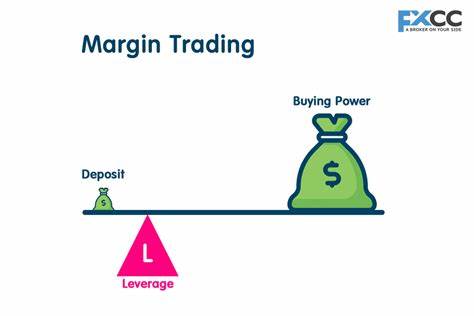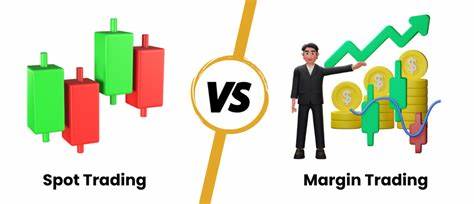Table of Contents

If you want to grow your investments in digital assets in different ways you will come across the term margin trading in crypto. It sounds technical and to be honest, it does come with some complexity. But once you understand the whole steps it becomes easier to understand and even more important to approach with care.
This beginner-friendly guide will walk you through everything you need to know about margin trading in crypto, including what it is, how it works, its benefits, potential pitfalls, and smart tips for getting started.
What Does Margin Trading in Crypto Mean?
Crypto margin trading is the method of trading for cryptocurrencies using borrowed funds from an exchange or broker. Instead of spending your own funds to buy or sell, you use a loan to maximize your trading potential. This can also be termed as “leverage.”
Here’s a simple example:
- You have $100 of your own.
- You borrow $400 from the exchange.
- Now you’re trading with $500.
This leaves you more exposed in the market and to additional profit opportunities. It also makes you riskier. If the trade doesn’t pan out, you can lose your original $100 in a flash or even be forced to pay more.
How Does Margin Trading in Crypto Work?
To understand how margin trading in crypto works, we need to break down a few underlying terms:
1. Initial Margin
This is how much of your capital you must put down in order to take a leveraged position. It’s usually a percent of your overall size of your trade.
2. Leverage
Leverage is how much borrowed funds your funds are paired with. If you have 5x leverage, you’re trading a five times greater position than your own funds.
- 2x leverage equals for each $1 of yours, you borrow $1.
- 10x leverage is where for every $1 of yours, you owe $9.
3. Maintenance Margin
This is the minimum amount of equity that you must maintain in your margin account. In the event that your balance drops below this due to a loss, the exchange may issue a margin call.
4. Margin Call and Liquidation
Margin call is an alert from the exchange that your position is at risk. Unless you inject more funds shortly, the exchange can close your position in other words forcibly shut it down so it doesn’t lose money.
Read More: How to Set Stop Loss and Take Profit in Crypto Trading
Why Do Traders Use Margin Trading in Crypto?
Margin trading in crypto can be extremely useful but only if you understand the risks completely and apply it sensibly.
- Bigger Positions, Greater Gains
The major reason traders use leverage is to reap the most amount of profit. Small changes in the market will reap larger returns when using leverage. - Short Selling Opportunities
Short selling is also possible for cryptocurrencies through margin accounts. They can profit from a falling market by selling an invested-in coin after borrowing and then buying it back at a lower price. - Advanced Strategies
Professional or seasoned traders use margin to execute more complicated techniques like hedging and arbitrage.
What Are the Risks of Margin Trading in Crypto?
While the potential for higher profits is attractive, the risks of margin trading cryptocurrency are just as valid and often significantly larger.
- Uncontrollable Volatility
Crypto markets are extremely volatile. A sharp price drop can eliminate a leveraged position overnight. - Total Loss or Debt
Unlike spot trading, in which your worst loss is limited to the amount you have invested, margin trading can ruin your money and even put you into debt in the event of a catastrophic trade. - Margin Calls and Forced Liquidation
When your position dips and your margin is no longer sufficient, the exchange can force the liquidation of your funds to cover the losses.
Key Terms Every Beginner Should Know
Understanding margin trading in cryptocurrency also entails understanding some common terminology used in trading:
- Long Position: Betting the asset to appreciate.
- Short Position: Betting the asset to depreciate.
- Leverage Ratio: The factor of borrowing (e.g. 3x, 5x, 10x).
- Stop Loss: A method of automatically selling a position if the price hits a predetermined level.
- Take Profit: A method of automatically selling a position once a profit level is reached.
- Liquidation Price: The trading price at which your position will be automatically closed.
Margin Trading Supported Crypto Platforms
Margin trading is supported by most crypto exchanges. Here are some well-known platforms:

- Binance: Isolated and cross margin trading support with a limit of 10x leverage.
- Bybit: Very famous for futures and leverage trading.
- OKX: Margin and futures trading support with variety of assets.
- Kraken: Famous for its regulation-friendly model and margin trading for certain coins.
- Bitget: Provides copy trading and leveraged positions with an easy-to-use platform.
Always select platforms that are transparent, have simple terms, and offer risk management tools.
Read Also: Top 7 Altcoins to Watch in 2025 (With Entry & Exit Points)
How to Start Margin Trading in Crypto (Step-by-Step)
Step 1: Activate a Margin Account
Not all crypto accounts are set up for margin trading. You’ll need to ask for a margin-enabled account and typically agree to additional terms.
Step 2: Fund Your Account
Deposit your base funds, your “initial margin.” Only deposit funds you can afford to lose.
Step 3: Select Leverage Level
Select your leverage level carefully. New users are typically advised to utilize less than 3x leverage to manage risk.
Step 4: Place Your Order
You can go long or short based on your market prediction.
Step 5: Monitor the Trade
Manage downside using stop-loss orders and lock in profits using take-profit orders.
Best Practices for Margin Trading in Crypto for Beginners
Here are some valuable tips to enable you to trade margin securely in crypto:
- Never Risk All Your Capital
Margin trading is not a “get rich quick” scheme. Use only a small portion of your portfolio for leveraged trades. - Use Low Leverage
Start with 2x or 3x leverage until you gain more experience. - Clear Stop-Loss Levels
Never leave your trades alone. Always use stop-losses to minimize your downside. - Educate Yourself
Market trends, news, and sentiment can all affect crypto prices. Get informed and never stop learning. - Practice First
Try demo accounts or paper trading first before putting actual money at risk. Most platforms carry simulation modes.
Margin Trading in Crypto vs. Spot Trading: What’s the Difference?

| Feature | Spot Trading | Margin Trading |
| Funds Used | 100% your own | Mix of your funds and borrowed |
| Risk | Limited to capital | Can lose more than capital |
| Complexity | Simple | Advanced |
| Suitable For | Beginners | Experienced traders |
| Profit Potential | Limited | Higher (but riskier) |
CONCLUSION
Crypto margin trading can be an effective instrument in the hands of someone who knows how it works and is ready to take its risks. As a beginner, it’s important to proceed with caution, trade responsibly, and never invest more than you can lose.
The most successful traders are not those who aim for the moon they are those who preserve their capital, learn from their failures, and compound steadily in the long run.
So, if you’re thinking of trying margin trading, don’t rush yourself to learn, rehearse, and prepare. The cryptocurrency market rewards patience, discipline, and informed decisions.
